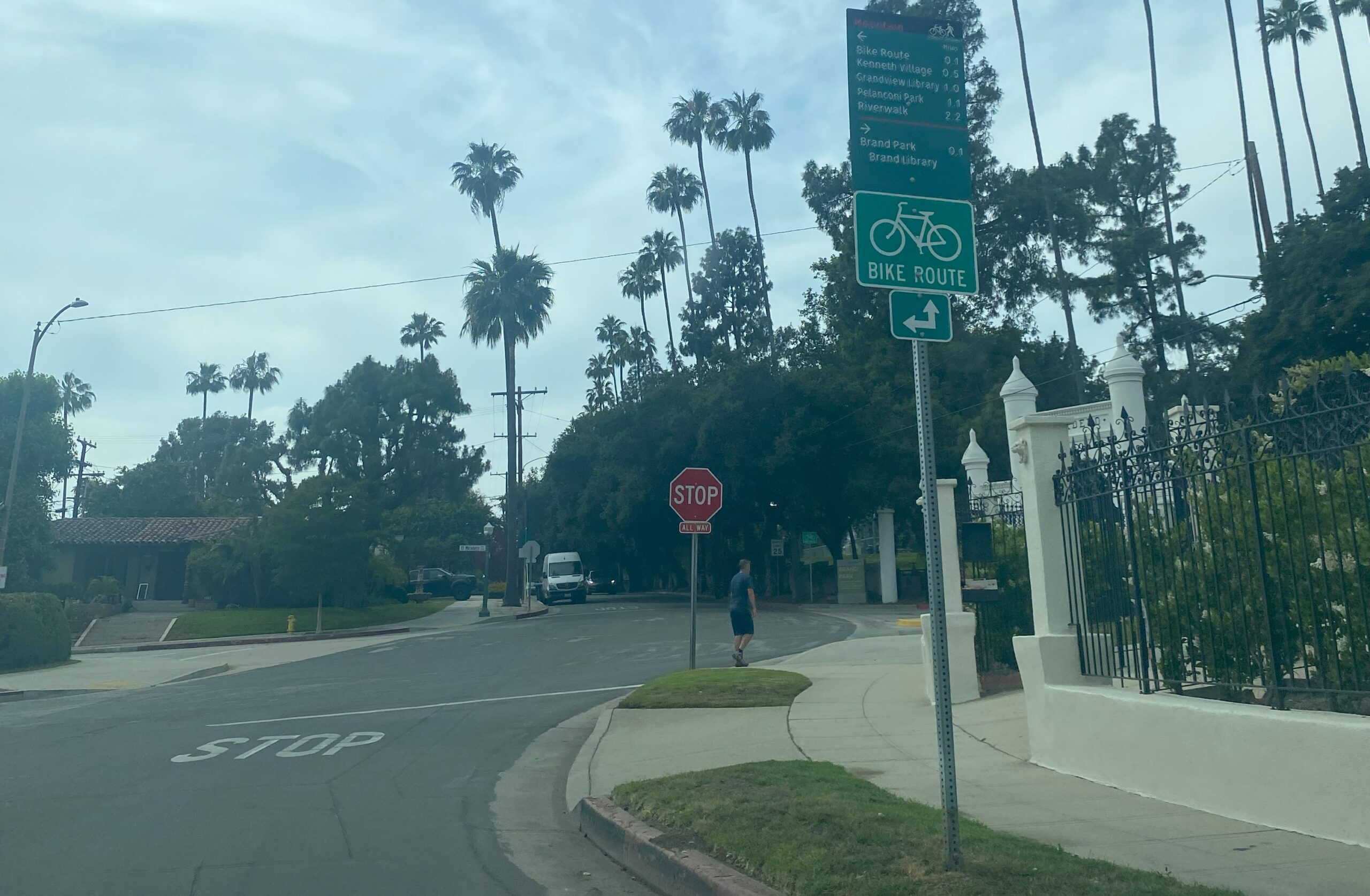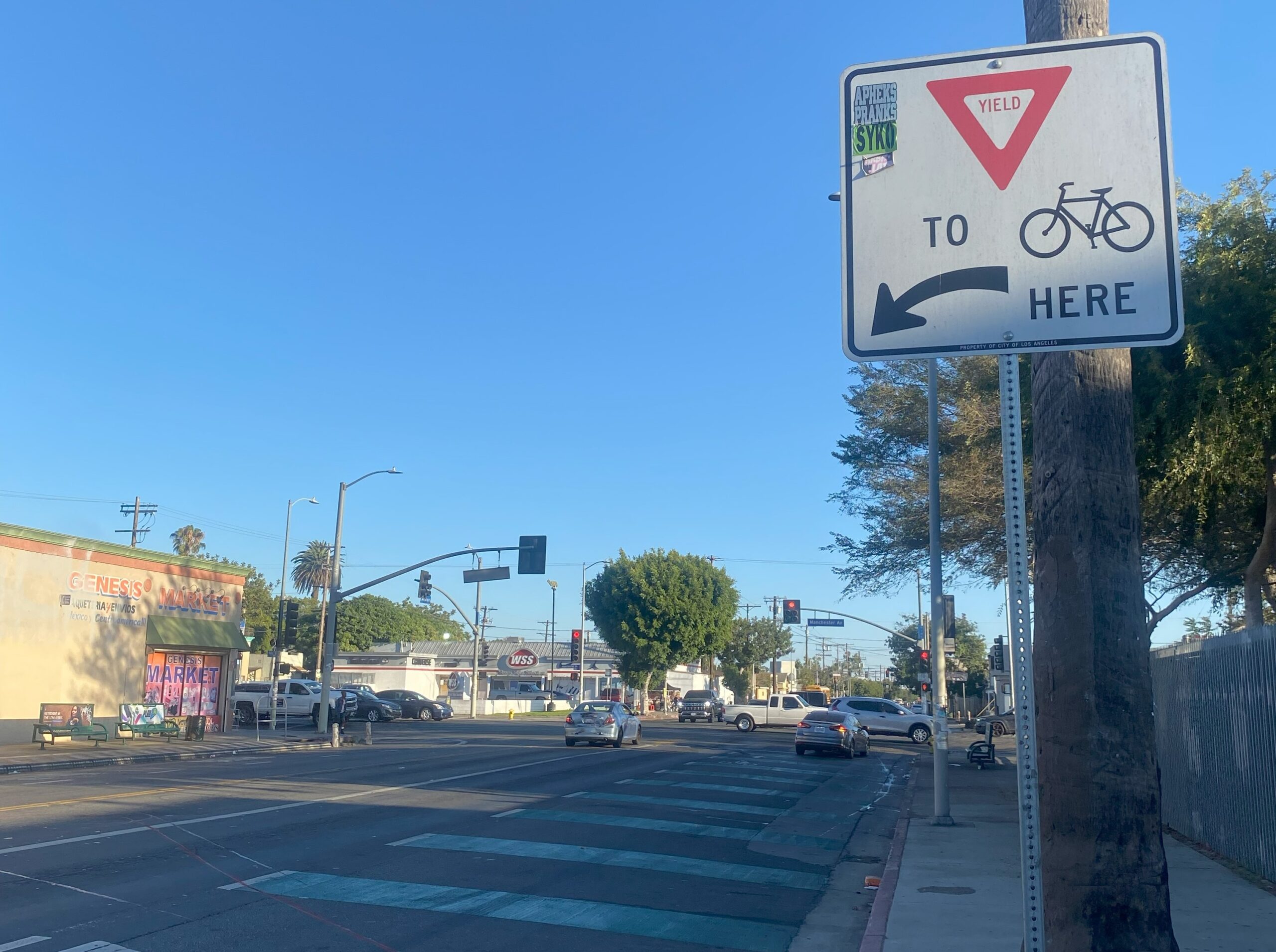Home » Personal Injury » California Car Accident Lawyer » California Right-of-Way Laws
Drivers, Riders, Passengers, and Pedestrians all get a lot of use out of California Highways and Boulevards. But it’s when everyone meets on local roads that the question of “who goes first?” comes up.
California Right-Of-Way laws are meant to keep traffic flowing. But they are also meant to protect everyone using the roadways. They determine who is responsible for showing caution to others and who’s to blame when collisions occur.
This is a guide to some of the most important Right-Of-Way laws that all travelers in California need to know at intersections, crosswalks, and on any street.
Right-of-Way at 4-Way Stops – The first motorist to stop at a stop sign should be the first to cross the intersection. When motorists arrive at the intersection at the same time, the driver on the right would proceed first. More information about what to do at a California stop-sign intersection.
Get Out of the Way of Emergency Vehicles – Drivers should immediately slow down and stop anytime an emergency vehicle with sirens on and lights on approaches from any direction. California Vehicle Code CVC 21806 explains the law. Motorists should pull to the right of the road and stop until the vehicle has passed. Drivers should avoid stopping in an intersection if possible.
Roundabout Right-of-Way – California doesn’t have a lot of roundabouts, but there are more appearing every year. This “traffic circle” keeps traffic flowing without lights or stop signs. The right-of-way is fairly simple; you must yield to any car that’s already in the roundabout. You would usually wait until no vehicles are approaching from the left and then enter the roundabout. Once you are on the circular route, other vehicles entering should wait for you to pass. Note: Drivers still have to yield to pedestrians and cyclists, too. You can read more about roundabout vehicle codes here.

Pedestrian Right-of-Way at Crosswalks — CVC 21950 instructs drivers to always give the right-of-way to pedestrians at marked and unmarked crosswalks in California. However, pedestrians should purposely step out in front of vehicles when the cars won’t have time to stop to avoid a collision.
Pedestrian Right-of-Way Outside of Crosswalks — CVC 21954(c) explains that pedestrians must yield the right-of-way when they are crossing a street somewhere other than a crosswalk. However, drivers are still required to show a “duty of care” to all pedestrians, even when they are jaywalking. Drivers must slow down upon seeing a pedestrian entering the street or in the street. They must be able to stop to avoid a collision. If they strike someone outside a crosswalk, motorists can still be found at fault or partly at fault for an accident.
Right-of-Way for Blind Pedestrians — CVC 21963 explains that drivers should always yield to blind pedestrians in a crosswalk. A blind person might be recognizable for carrying a white cane or having a guide dog. Drivers who hit a blind person on foot can face criminal charges in California.
Right-of-Way for Disabled Pedestrians – Those with other disabilities and mobility issues should also be given the right-of-way. That might include someone on crutches, in a wheelchair, or using a motorized cart should be shown caution. It might include a mother crossing with children. Drivers should not proceed until the pedestrian has crossed their half of the street. Motorists should also always stop without leaving their vehicles sticking out into a crosswalk to make the route harder for those with disabilities. Additional instructions for drivers approaching a disabled pedestrian.
Cyclists’ Right-Of-Way on the Street — CVC 21200 grants riders the right to take a full traffic lane like any driver. They may travel on the right side of the right lane, sharing one lane with a vehicle. They can also grab the full lane if the lane is too narrow to share. These rights also mean that bicyclists must follow all traffic laws that drivers follow, as long as they apply.
Cyclists’ Right-of-Way at Intersections – Cyclists must stop at all red lights and stop signs in California.
Cyclists’ Right-of-Way When Vehicles Are Passing – Drivers must not pass cyclists unless there are three feet or more of room to do so. California AB 1909 went further recently. It requires drivers to change lanes when passing a cyclist when possible.
Cyclists Can Enter Lanes Where Bike Lanes Exist – Riders should use bike lanes where provided, but they can still take a traffic lane in certain situations. CVC 21202 allows them to take a lane when there’s a bike lane available if they are traveling the same speed or faster than vehicle traffic. Those on bicycles could also take over a lane if an obstacle were in the bike lane.

Motorcyclists would obey most right-of-way laws that drivers follow. However, in California, riders have the right to claim parts of two lanes if necessary.
Lane Splitting Right-of-Way Laws in California – Motorcyclists have a right in California that most states don’t offer. California allows lane splitting. It’s where a motorcyclist can travel between two lanes and rows of cars. This would usually be done when traffic was stopped at red lights. CVC 21658.1 grants the motorcyclist this right-of-way. Drivers must be cautious and alert so they don’t switch lanes when a rider is directly beside them. They must also check for a lane-splitting rider before opening doors while sitting at an intersection.